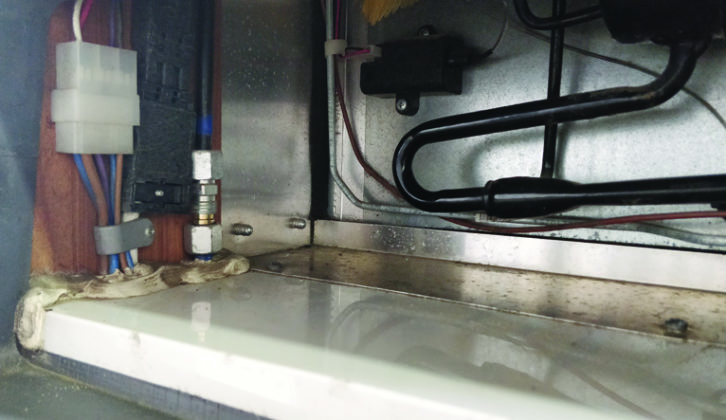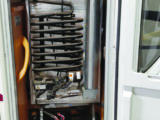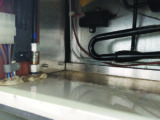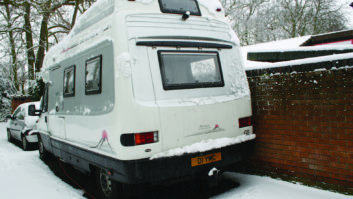It’s funny to notice how some things seem to arrive in groups. For example, here at the workshop, we can go for many months without ever seeing a Mercedes Sprinter-based motorhome, but then see three of them in the space of one week.
Recently, the ‘frequent flyer’ has been fridges: we’ve had a real glut of problems to deal with, from a basic service to a full-blown fridge/freezer replacement procedure.
These days, the mainstay of our work does seem to consist of servicing and habitation inspections, but this can get quite repetitive at times, so carrying out a fridge service or fault diagnosis makes a welcome change.
If you’re looking for another way to keep your food cool on tour, our best cool box for a campervan guide could be worth a look too.
Malfunctioning refrigeration
Some of these faults can be particularly interesting to diagnose and fix. For example we worked on one fridge that wouldn’t’ select gas operation, and one that lit initially, but the igniter sparked for 30 seconds and then the whole thing shut down, with a fault indicated on the LCD.
We’ve also dealt with one unit that was drawing way too much current and blowing the fuse, and another with a broken bracket on the cooling unit, which led to a full fridge replacement.
Much more worrying was the fridge that hadn’t been reconnected to its gas supply after work was done on it!
A basic service involves removing the burner and metering jet for cleaning, then cleaning out the flue – we need to make absolutely certain that it has no build-up of soot.
This is followed by a flue gas analysis (FGA), which sounds very technical, but is rather like checking the exhaust emissions of your car during the MoT.
FGA involves inserting a probe into the flue of the appliance to draw off a sample of the products of combustion.
This sample is then analysed in an electronic instrument, to measure the carbon monoxide and carbon dioxide content, which gives an indication of how well (or how badly) the appliance is actually burning.
Fault finding, then fixing the problem
The fridge that wouldn’t select gas operation turned out to have two separate faults, which were both causing the same symptom.
First, the gas regulator was failing, causing a low gas supply and meaning the fridge would light, but then quickly go out.
A simple test for a regulator is to light one of the larger hob burners, and then light a second one, watching the flame at the first. If the flame grows smaller, this is a pretty good indicator that the regulator is failing.
A new regulator didn’t fix things – this fridge turned out to have a faulty printed circuit board (PCB) as well – but once that was replaced, normal service resumed.
Our second faulty fridge continued to fire the igniter, even though the flame was clearly established.
This fridge uses flame rectification to detect the flame – the ionised gas in the flame conducts a current from the igniter electrode to the negative-connected burner. Completion of this circuit is identified by the electronics, at which point, the igniter stops firing.
The electronics are on the main PCB, so that is the part to replace; but in this case, there was another problem – the fridge would not operate, on either the 230V or the 12V supply.
Chances are these faults were also caused by the PCB but because heater elements are difficult to replace in situ, it made good sense to replace them both – the fridge had to be removed to change the PCB.
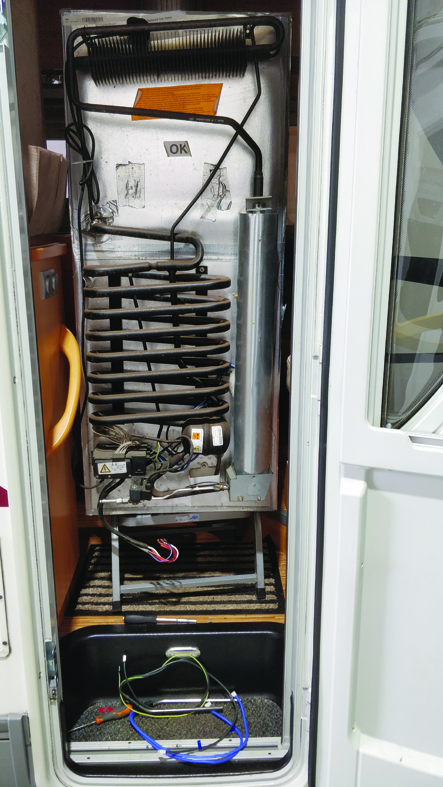
Checking up on the control electronics
The fridge drawing too much current was another main PCB fault. In this case, there are two 12V supplies: one is fed from the 12V distribution unit to power the control electronics, and the second via a relay from the engine battery.
The relay is energised when the engine is running, and this provides the higher current required for the heater element. This was yet another PCB problem, but some bodger had disconnected the engine running signal wire to try to fix it – probably assuming that the fridge was trying to power the heater element via the PCB supply (which it can’t do).
The new PCB was simple, but it was more involved to sort out reconnecting the wire. It was just impossible to get at. We had to dismantle the cupboard over the fridge.
The fridge replacement was trying, too. It had many faults, but worst of all was a broken bracket on the cooling unit, meaning that the lower part of the unit was insecure.
This was a challenge: the fridge was 40mm wider than the habitation door, so it had to come out of the vehicle via the passenger doorway – after we had removed the cab seat.
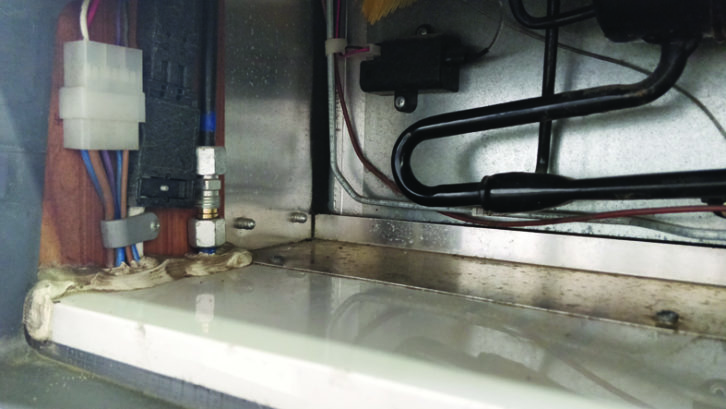
The final job started as a blocked gas regulator, but on replacement, it was obvious there was an open gas pipe. The PCB had been replaced elsewhere, and a glance behind the fridge revealed the gas supply wasn’t reconnected.
This major oversight was potentially dangerous. Thankfully, the blocked regulator meant that the danger never materialised, but the fitter should have carried out a drop test, which would have revealed the failed regulator and the unconnected fridge.
If you liked this… READ THESE:
Technical Tips: Fuel Consumption
If you’ve enjoyed reading this article, why not get the latest news, reviews and features delivered direct to your door or inbox every month. Take advantage of our brilliant Practical Motorhome magazine SUBSCRIBERS’ OFFER and SIGN UP TO OUR NEWSLETTER for regular weekly updates on all things motorhome related.
The final job started as a blocked gas regulator, but it became obvious there was an open gas pipe. The PCB had been replaced elsewhere, and a glance behind the fridge revealed that the gas supply hadn't been reconnected


